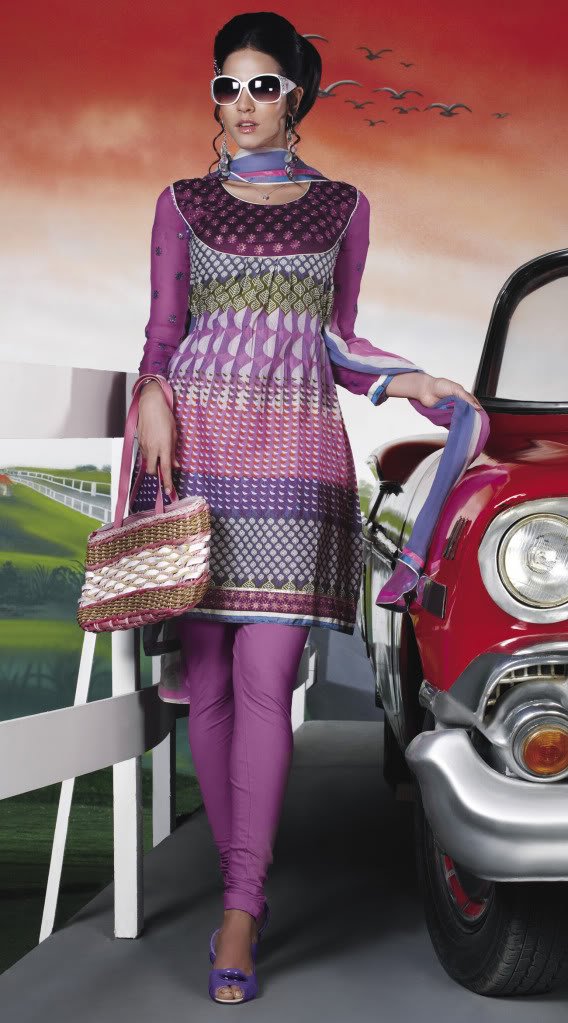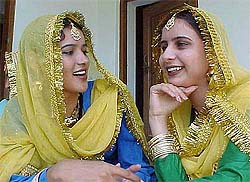punjabi dress Biogarphy
source(google.com.pk)This year, due to its comfort and adaptability the Kurdish salwar has become an item of fashion in some European countries, particularly in Spain. It is amazing to see Europeans in their Kurdish salwars strolling through beaches, airports and city centers. The salwar – which is identified with the Kurdish peasantry but is becoming a widely-used international dress, with its many different colours, in European metropolises – has also become a reminder of our oppression because it is being introduced in many shops as ‘Turkish salwar’. Nonetheless, a considerable number of people are aware that salwar is in fact Kurdish.
When I walk on European high streets, I see skinny people in skinny jeans but I also see the Kurdish salwar on both skinny and large sized people. As a Kurd, I am proud to see part of my culture being adopted by European people but I also feel sorry that my culture is unrepresented.
Most European tourists to Istanbul visit the Grand Bazaar Kapali Çarsi (Covered Market). Historically the Grand Bazaar became the center for trade for the entire Ottoman Empire. Shops are bursting with everything you can imagine: from jewellery to silk clothing, rugs, traditional copperware and exotic, oriental imports. Nowadays the market is fueled by shopaholic tourists with fat wallets. Both Turkish and non-Turkish products are sold but all are represented as being Turkish. Some shop owners are Kurdish but, as a result of the Turkish state’s oppression, they cannot represent their Kurdish products openly to consumers. There are products from other ethnic groups living in Turkey but most of the non-Turkish products – such as jewellery, rug, clothing, etc – are Kurdish. The foreign designers get samples and copy them in Europe and they call everything, including the Kurdish salwar, Turkish or oriental.
The salwar is at times an elegant costume of Kurdish Henna nights; at other times it is the uniform of the cotton-producing farms or the favourite of Kurdish landowners; and, most importantly, it is a symbol that makes us remember peshmergas – Kurdish freedom fighters.
According to historical information, the salwar originated from Iran (G.Lorusse, v.9), most probably produced by the Eastern Kurds living in Iran. The Eastern Kurds rapidly transferred the salwar tradition to other parts of Kurdistan, where it was widely adopted in the countryside and as an important part of traditional costumes. Men and women, depending upon their social status, wore different types of salwar.
The salwar was favoured for its usefulness during military confrontations. Moreover, it was also an important part of the Hilat. During the foundation of Fütüvvet, the salwar was used as part of a uniform or as a symbol of social status. In high places, only a few were given the duty of helping to put on the salwar (G.Lorusse, c. 11 ).
Kurdish fashion, which is unable to represent itself, has been easily assimilated into the culture of others. The concept of nation is, in many ways, related to nationalism. When it comes to fashion – which is part of our perennially-threatened Kurdish culture, including customs, art, architecture, literature and cooking – it is clear that it must be helped to stand for itself.
punjabi dress Photos Pictures Pics Images

punjabi dress Photos Pictures Pics Images

punjabi dress Photos Pictures Pics Images

punjabi dress Photos Pictures Pics Images

punjabi dress Photos Pictures Pics Images

punjabi dress Photos Pictures Pics Images

punjabi dress Photos Pictures Pics Images

punjabi dress Photos Pictures Pics Images

punjabi dress Photos Pictures Pics Images
No comments:
Post a Comment